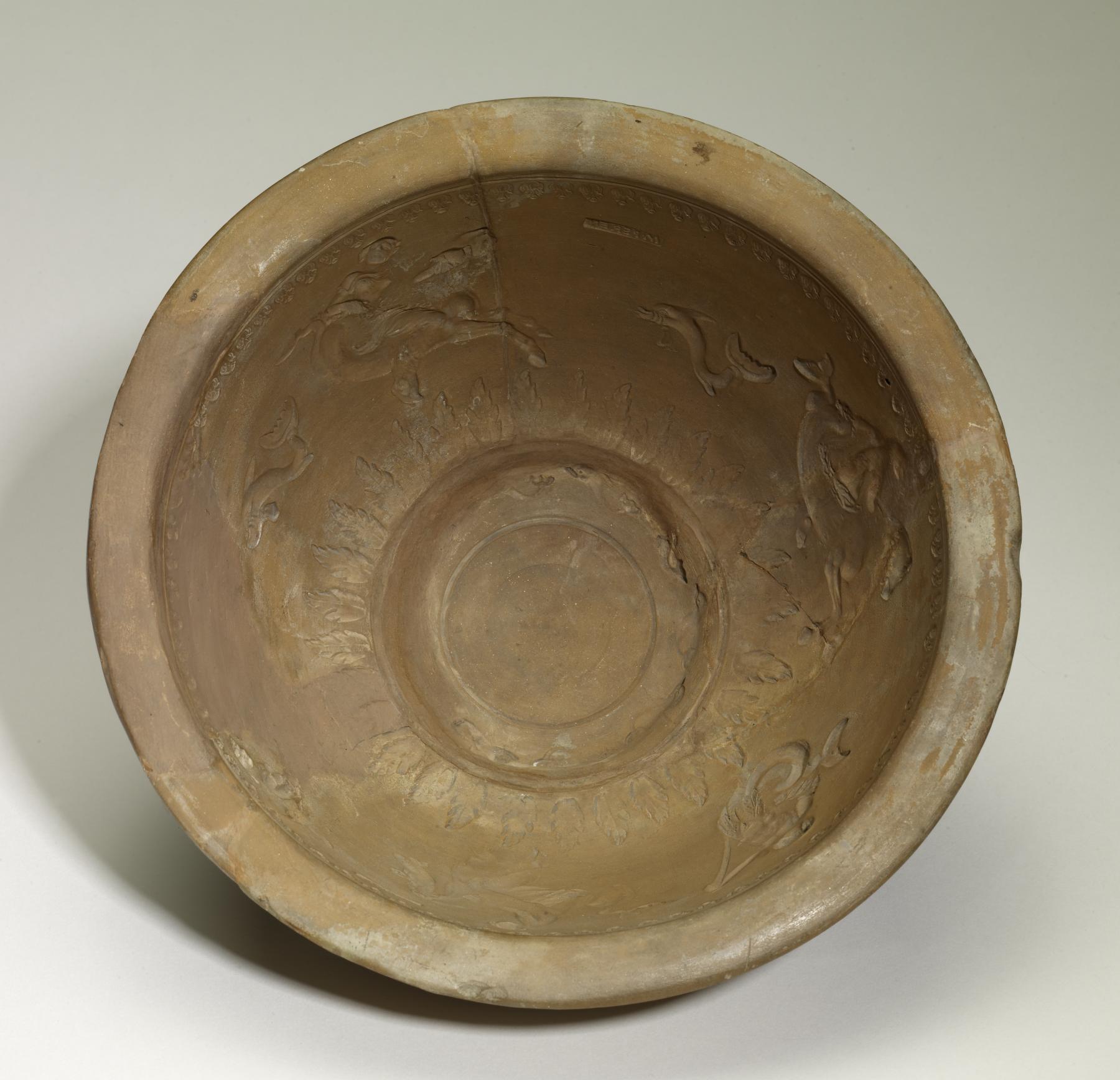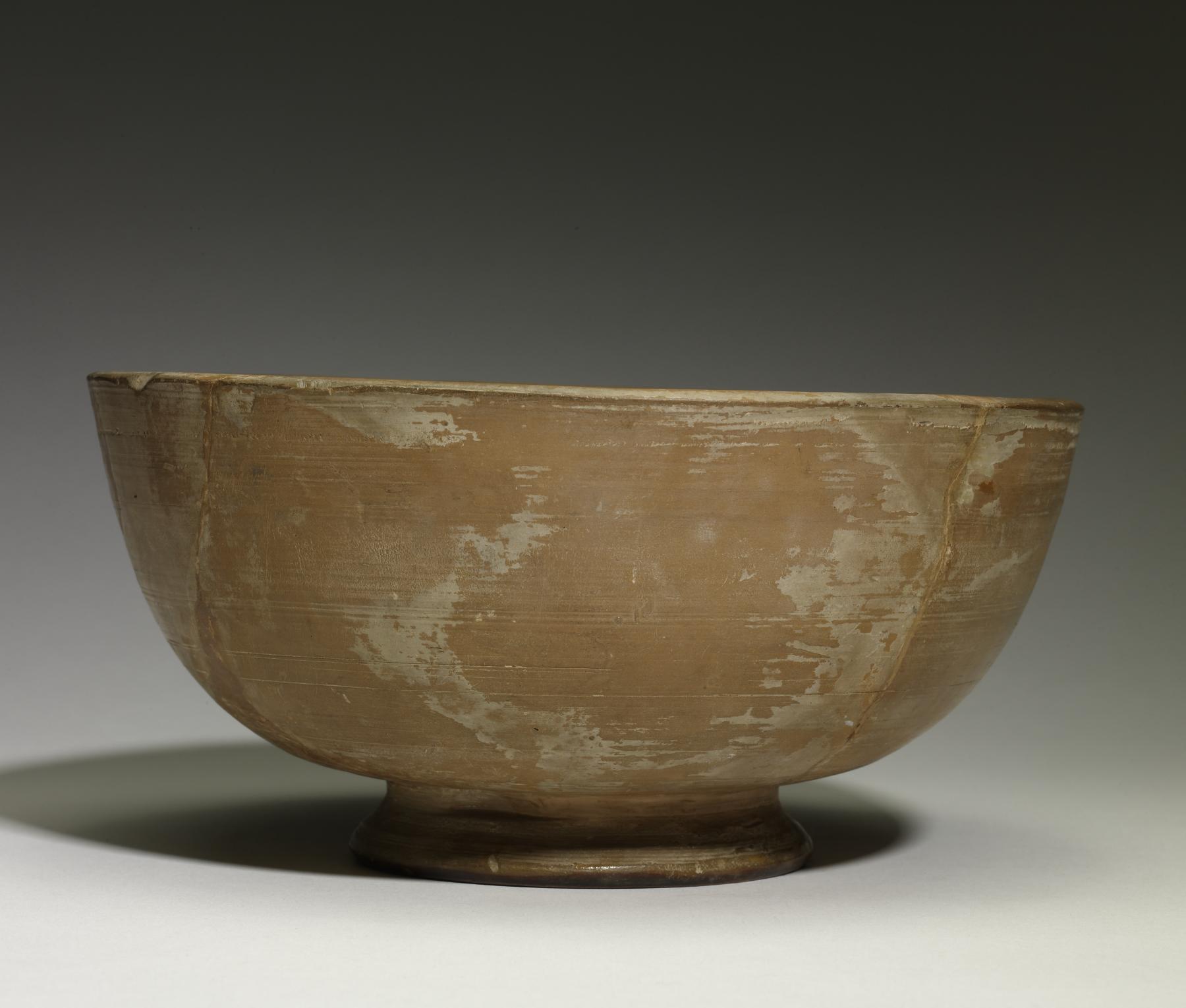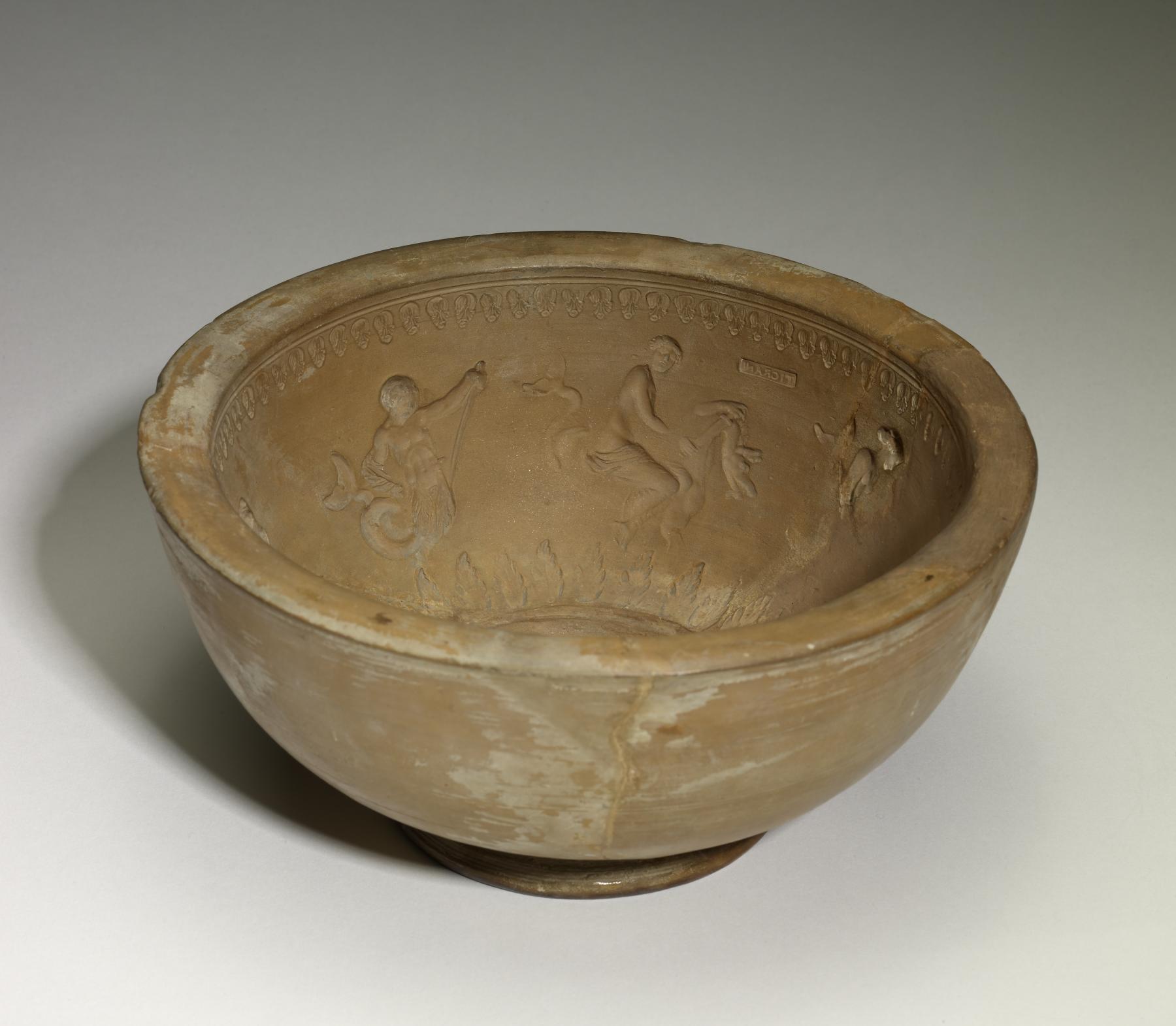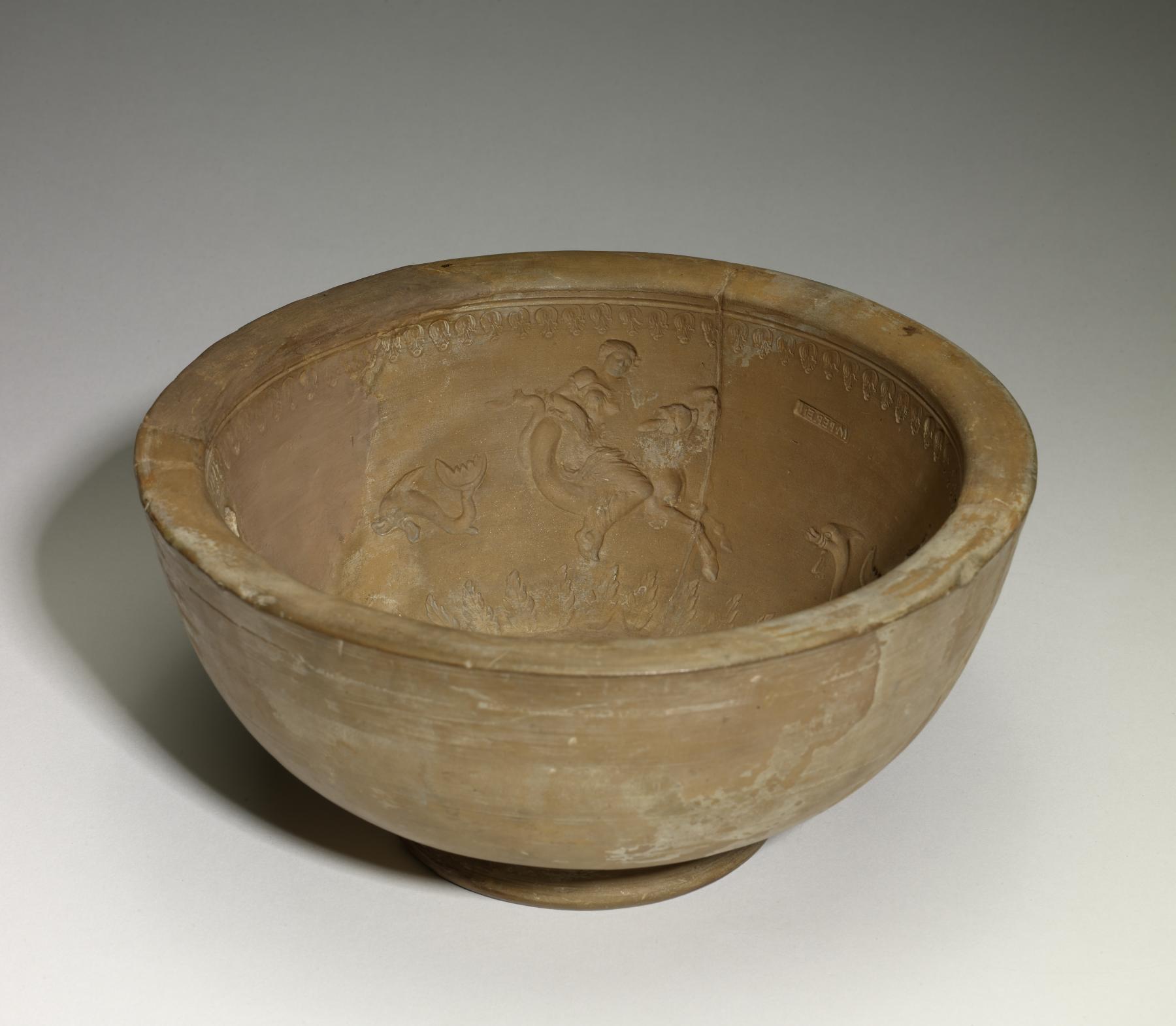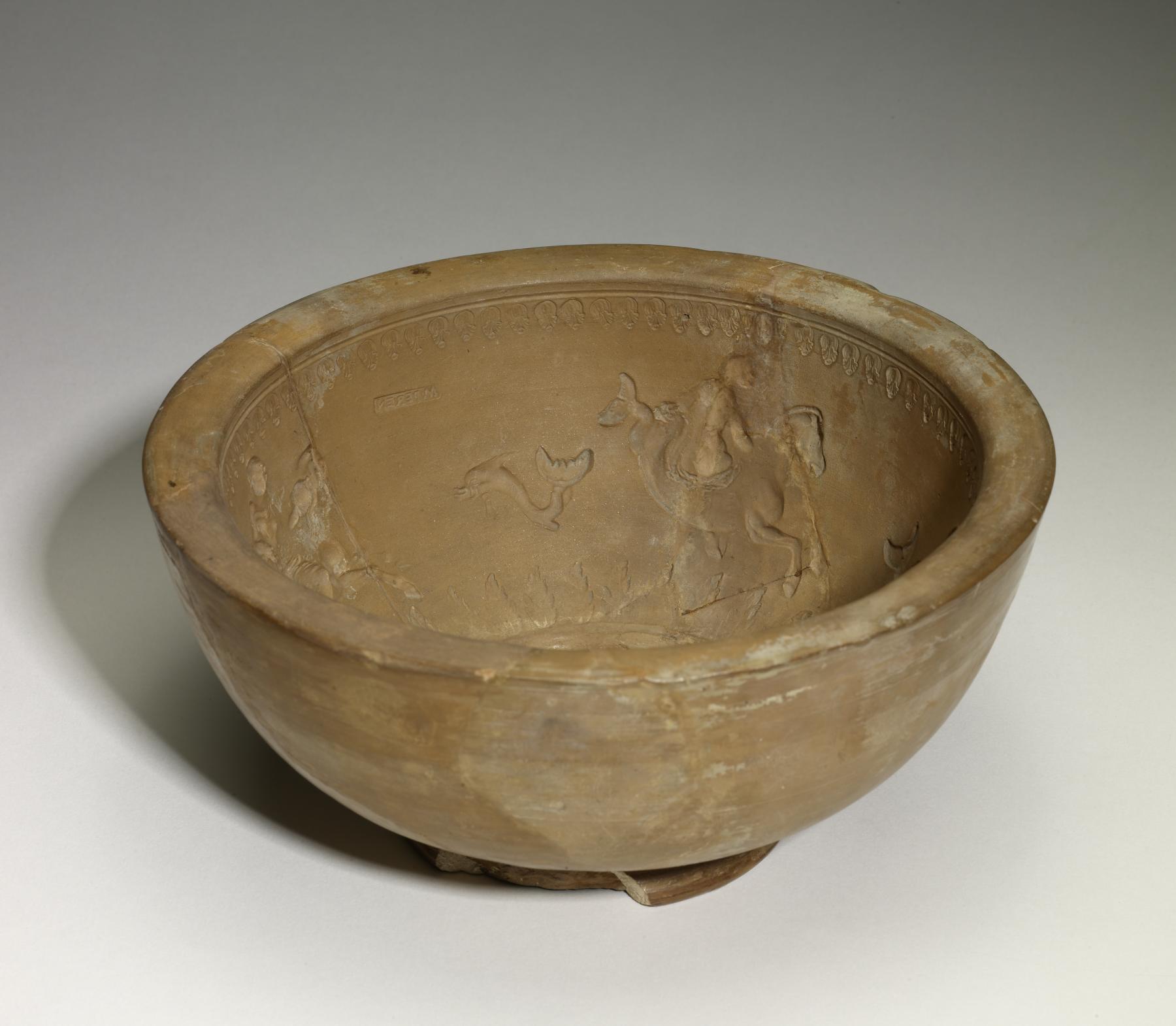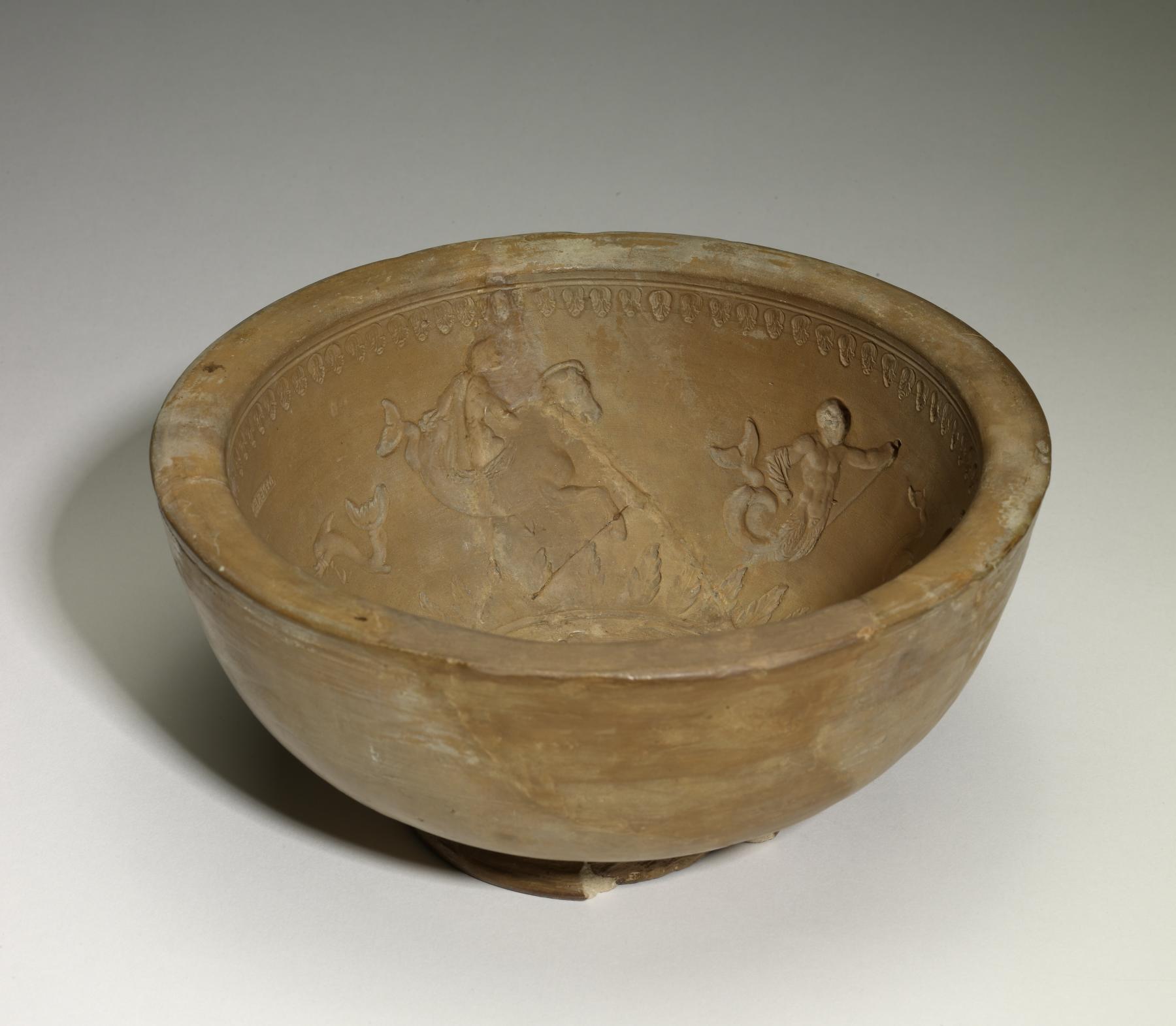Mold for a Bowl with Triton, Nereids, and Dolphins
(Roman Empire )
Impressed with nine different motifs, using both stamps and roller-dies, this mold would have been used to create a bowl decorated with figures of dolphins and mythological sea creatures in relief. In the foot of the mold is an ornamental ring of dolphins crowned by radiating leaves that climb up the walls of the vessel. The main motif shows dolphins interspersed with Tritons and nereids, or sea nymphs, riding hippocamps, which have the upper body of a horse and the lower body of a fish. Triton is identified by his curved fin. Also impressed in retrograde on the walls of the bowl is the potter’s stamp, which would appear as “MPEREN” in the final product. The rim of the bowl is decorated by a roller-die that creates a repeating vegetal pattern. While the features of many of the figures are well-defined, the mold has been repaired from fragments, and the damage has obscured some of the design.
Molds were widely used in the Roman Empire to produce vessels. The molds themselves were made on a wheel, formed with a hollow interior in the shape and size of the intended vessel. While it was still soft, the potter would then impress the mold using roller-dies and stamps that had a slightly curved face to follow the curvature of the mold to create figural and ornamental patterns. After firing the mold, the potter would press clay into the hollows of the mold and smooth it on the wheel to create his vessel. The finished product could easily be removed from the mold after drying, allowing the potter to manufacture multiple identical vessels.
Provenance
Provenance (from the French provenir, 'to come from/forth') is the chronology of the ownership, custody, or location of a historical object. Learn more about provenance at the Walters.
Jacob Hirsch, Paris and New York; estate sale of Jacob Hirsch, Lucerne, December 7 1957, no. 34; purchased by Walters Art Museum, 1957.
Exhibitions
| 1997-1998 | Artisans of Ancient Rome. The Newark Museum, Newark. |
Conservation
| Date | Description | Narrative |
|---|---|---|
| 1/14/1974 | Treatment | cleaned |
| 10/30/2013 | Treatment | Cleaned, repaired |
| 10/30/2013 | Treatment | Cleaned to remove modern dirt and grime; prior restorations reduced to reveal original surfaces. |
Geographies
Arretium (Place of Origin)
Measurements
H: 4 1/8 × Diam: 8 3/4 in. (10.5 × 22.2 cm)
Credit Line
Museum Purchase, 1957
Location in Museum
Not on view
Accession Number
In libraries, galleries, museums, and archives, an accession number is a unique identifier assigned to each object in the collection.
In libraries, galleries, museums, and archives, an accession number is a unique identifier assigned to each object in the collection.
48.2103

